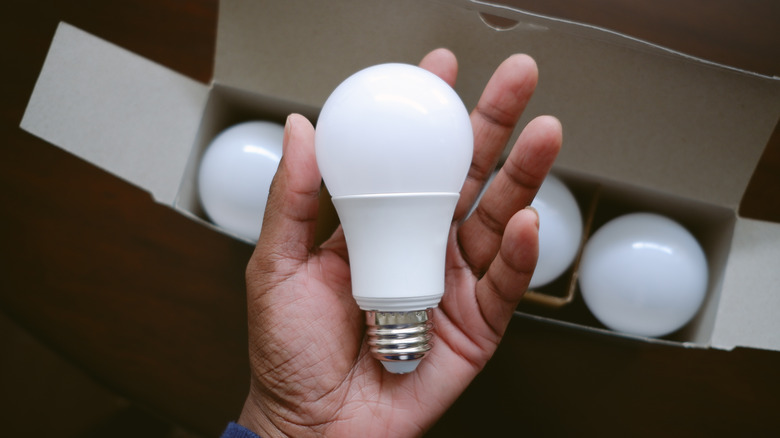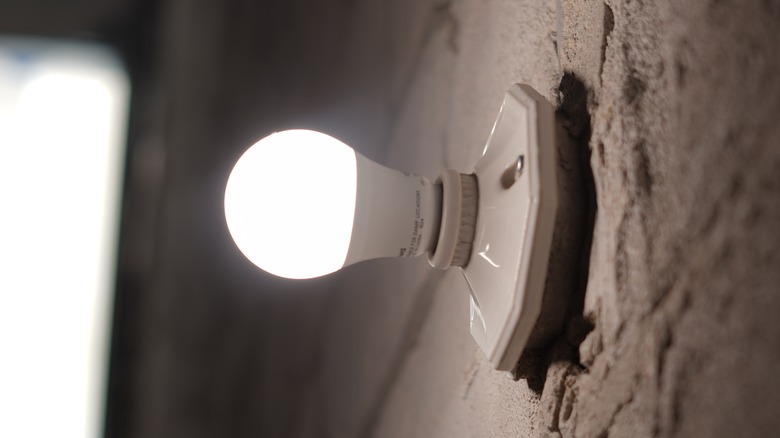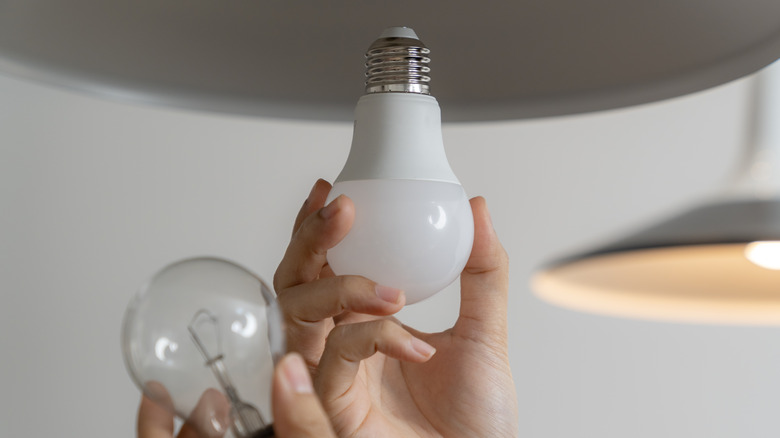Can You Use A 100W LED Bulb In A 60W Socket?
We may receive a commission on purchases made from links.
Though we don't often think too hard about them, light bulbs have undergone major changes throughout the years. They've become brighter, longer-lasting, and more environmentally friendly. Simultaneously, old incarnations like incandescent bulbs have been banned in the United States for some time, with LED bulbs becoming the standard in most households and businesses. They're a more energy-efficient option, taking in less power while still delivering impressive amounts of light, and will last you significantly longer than the average incandescent bulb. However, adding them to your fixtures isn't as simple as removing the old bulb and putting in a new one.
For example, if you have a 100-watt equivalent LED bulb and a 60-watt fixture, can you safely use the bulb in it? While it might not seem possible to pull off such a combination, in truth, it's entirely doable. That's because the LED bulb isn't technically drawing in 100 watts of energy when put into a 60-watt-maximum fixture. Instead, it only uses between 12 and 14 watts on average, with some coming closer to 20 watts. This is seen right on the front of LED bulb packaging, with the much lower actual use wattage right beside the 100-watt label. All of this ties into something called equivalent wattage.
So, how does equivalent wattage work, and how does it allow a "100-watt" bulb to fit a 60-watt fixture? It all comes down to the key measurements in lighting and how LED bulbs have altered the scales.
How does watt equivalence work?
As touched on, wattage is the measure of energy related to lighting. Fixtures can only safely handle so many watts, and bulbs require specific numbers of watts to function. This is why not all bulbs and fixtures are interchangeable, as using the wrong combination can lead to damage to the socket or even a fire should the bulb overheat to an extreme degree. Meanwhile, there's lumen: the brightness level a light bulb gives off, which is often mistaken for wattage. While these measurements aren't the same, they do go hand-in-hand when breaking down wattage equivalency.
Going back to the 100-watt equivalent LED bulb in a 60-watt fixture example, this combo works because the bulb isn't actually using 100 watts. If it were, it would go beyond the socket's limit and damage it. As mentioned, such LEDs tend to use under 20 watts, so where does the 100-watt label come from? This is the equivalent amount of light provided compared to an incandescent bulb. The wattage actually used by the LED and the light given off is equal to the number of lumens a 100-watt incandescent bulb would give off. This is why LEDs are regarded as a more energy-efficient option, as they use less energy to create the same or more light than traditional bulbs.
Not only do LED-type bulbs tend to save you money in the long run, but they're clearly pretty good at conserving energy based on their watt equivalence, too. Naturally, though, one has to wonder, what are the downsides to keep in mind?
Are there downsides to using LED bulbs?
Considering the inherently unruly and potentially dangerous nature of electricity, it's no surprise that the improper use of LED bulbs could cause things to get scary. To reiterate, the biggest concern with such bulbs is mismatching them with inappropriate fixtures. It's paramount to ensure the wattage of your bulb — the actual wattage used, not the incandescent equivalent measurement — doesn't exceed that of the fixture, or else you could have a fire hazard on your hands. This is the most concerning possible negative, while there are some far more minor drawbacks to LED bulbs that are still worth mentioning.
As prevalent as LED bulbs are, and for all of their positive attributes, they're not for everyone. For one, they can get annoyingly noisy, emitting a buzzing sound if connected to older, potentially faulty wiring or dimmers that aren't intended for LED use. Worse yet, they can have an adverse effect on your sleep schedule. Some LED bulbs give off an excess of blue light, which is not only bad for your skin but can throw off your circadian rhythm. Thus, you could struggle to fall asleep and wake up on time.
LED lightbulbs might not be perfect, but for many, the positives far outweigh the negatives. So long as they're affixed to the correct sockets, bearing in mind watt equivalency, they're likely to serve you well and for quite some time.


